Whenever I am working with vintage fabric, it seems I either have more yardage than I need or, more frequently, less than I need. I have learned over the years there is usually a way to work around having less fabric than I really need. I just have to get creative. And that’s what I did when I made this dress.
I quickly determined there was no way I could get the dress I wanted by placing the pattern on the lengthwise straight-of-grain. The flare of the skirt, which I wanted to be mid-calf, precluded any notion of such a layout. At 45” wide, I knew I could just get the dress length I wanted if I laid out the pattern on the cross-grain, from selvedge to selvedge. Linen is a very stable fabric, so I was confident the cross-grain would work. In addition, there were no directional limitations in the floral design of the fabric. Barely fitting my pattern – from shoulder to hem – on the fabric from selvedge to selvedge, however, would leave no extra fabric to turn up for the hem – or even to face the hem. I decided to worry about that later. First I wanted to determine how I could get the four pieces for the dress and the two lengthened sleeves placed on the fabric, keeping in mind three important things: 1) although this was not a fabric to be matched per se, the all-over design of the fabric needed to be on the same plane in contiguous seams; 2) I wanted to space out the larger floral motifs so the dress would be balanced as best as possible (looking critically at the dress I made when I was 23, I clearly could have given this more thought!); and 3) I wanted to avoid large demonstrative blooms at the bust. Then, and only then, would I worry about the hem.
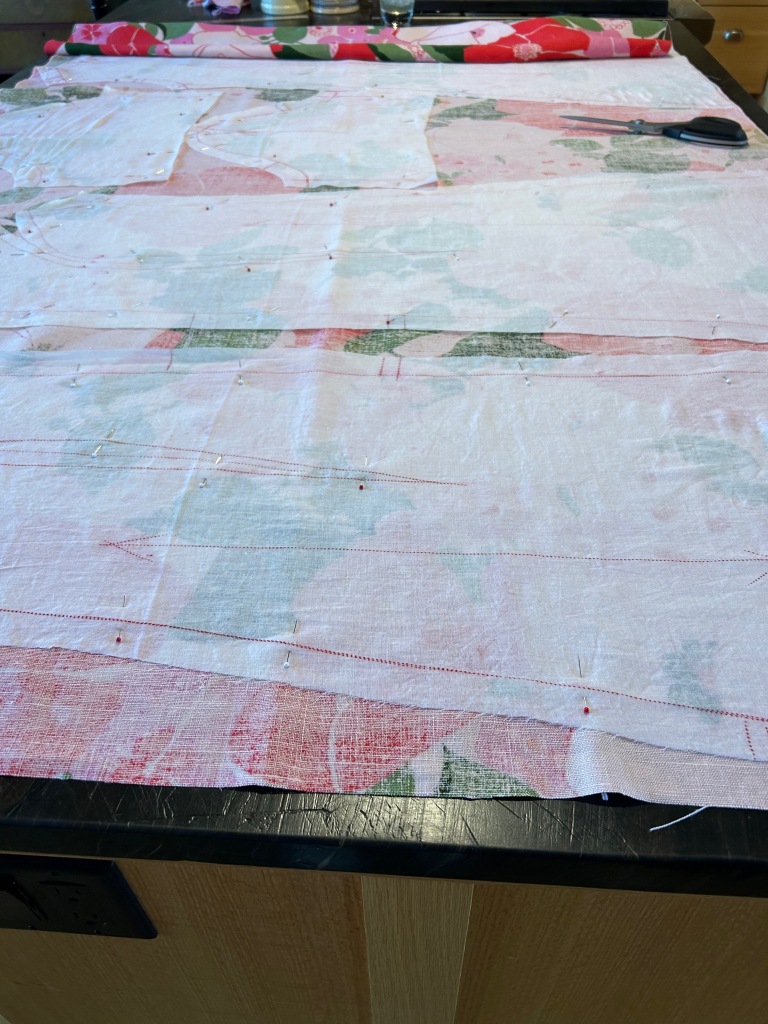
Once I was happy with this placement, I had a eureka moment when I knew I could accomplish two things with a simple bias trim made from the yardage of deep pink linen which coordinated nicely with the floral. 1) I could preserve the full 45” of cross-grain length by applying bias trim to the hem edge instead of turning it under, and I could do the same with the sleeves. And 2) the trim would add interest to the dress, just as I had vaguely imagined. (A quick aside here – I have ample yardage of the solid deep pink linen to make a coordinating coat at some point. Every dress needs a coat, right?)
I underlined this dress in a very lightweight, pre-washed, cotton batiste, then I lined it in Bemberg rayon. Moygashel linen washes beautifully, as does Bemberg lining, which is why I chose Bemberg over silk for this dress. I eliminated the neckline facing, choosing instead to bring the lining up to the edge of the neckline seam, then under-stitching it to secure that edge in place.
I chose to do a hand-picked, lapped zipper, an application which I think looks so lovely. Interestingly, I hand-picked the zipper in the dress I made in 1973, although it is a centered application.

When it came time to apply the bias-cut trim to the hem and sleeves, I had to experiment around a bit. I didn’t want it too wide, but it needed to be substantial enough to look like it was meant to be and not an afterthought or decision made in desperation! I finally settled on an exposure of 1/2”.
Now this is where it gets interesting. A few weeks ago I saw a vintage dress on a Facebook/Meta post by Xtabay Vintage Clothing Boutique. It is obviously Moygashel linen (I can tell by its weave and color), but what really caught my eye were the bias strips and low-profile bows adorning its sleeves. I tucked this idea in the back of my mind for future consideration. What I didn’t know was that the future was right around the corner! Yes – I “borrowed” this idea and added a single bias-cut bow to each sleeve. Somehow, it just seems to finish the dress.

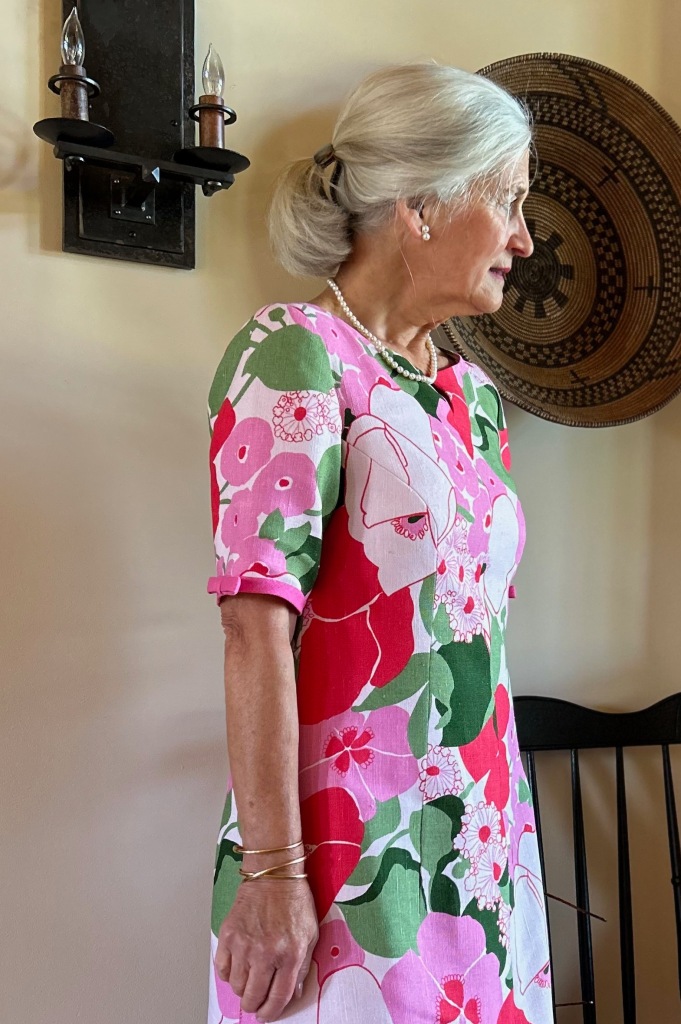
Well, you may have guessed by now the reason for making this dress this year. I will wear it next week when my husband and I celebrate our 50th Wedding Anniversary. I have changed a lot in those 50 years (and so has my husband!), but I still love pink in all its shades and I still love Moygashel linen (and I still love my husband, too!)

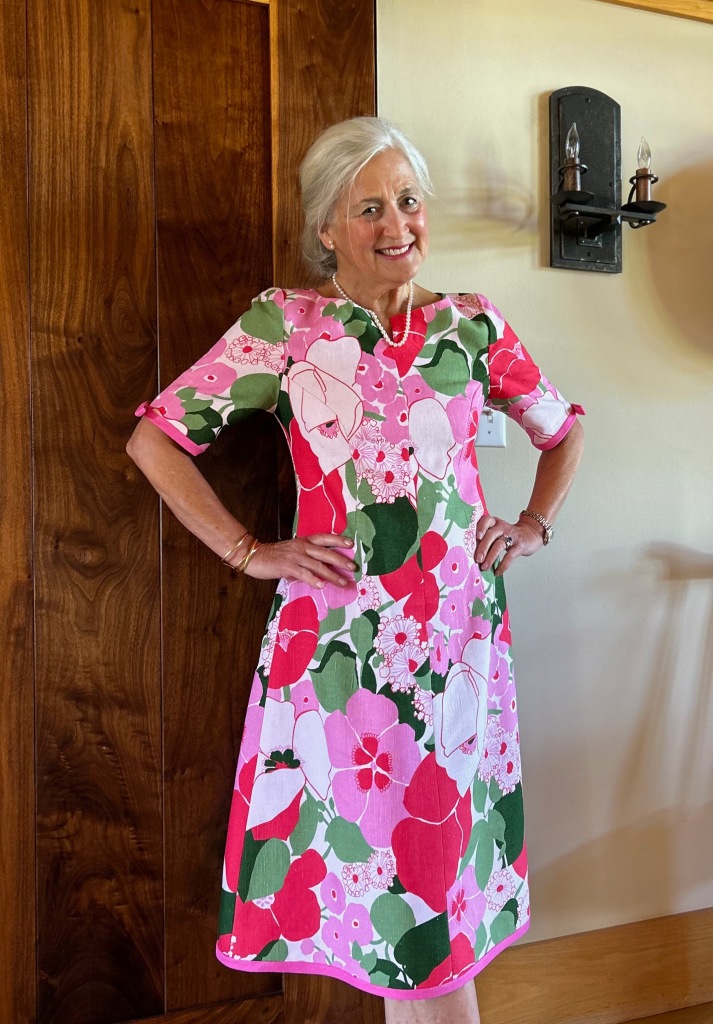
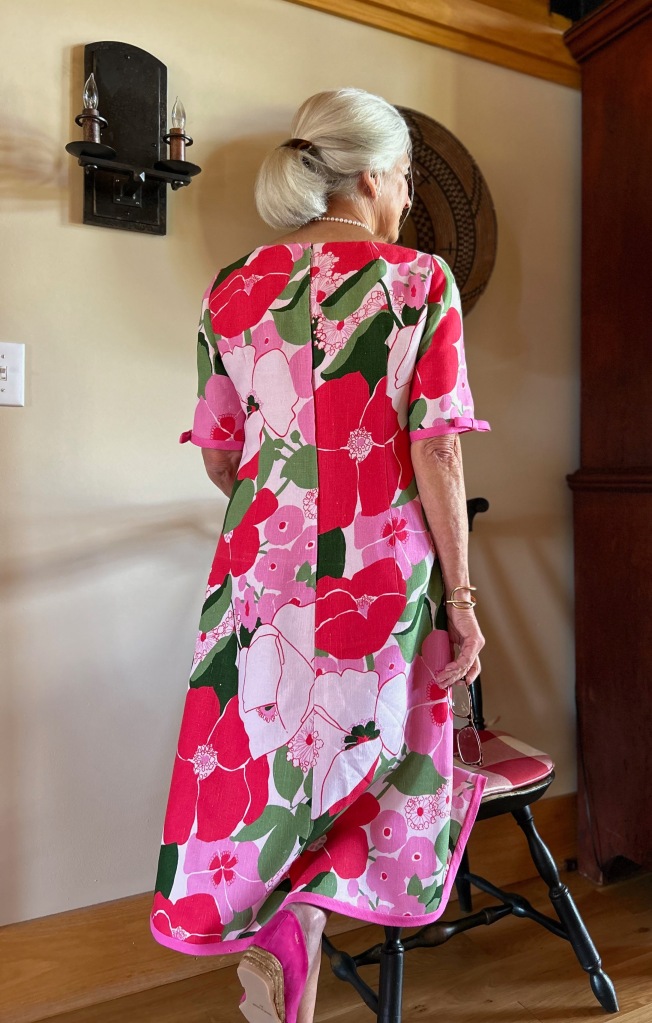
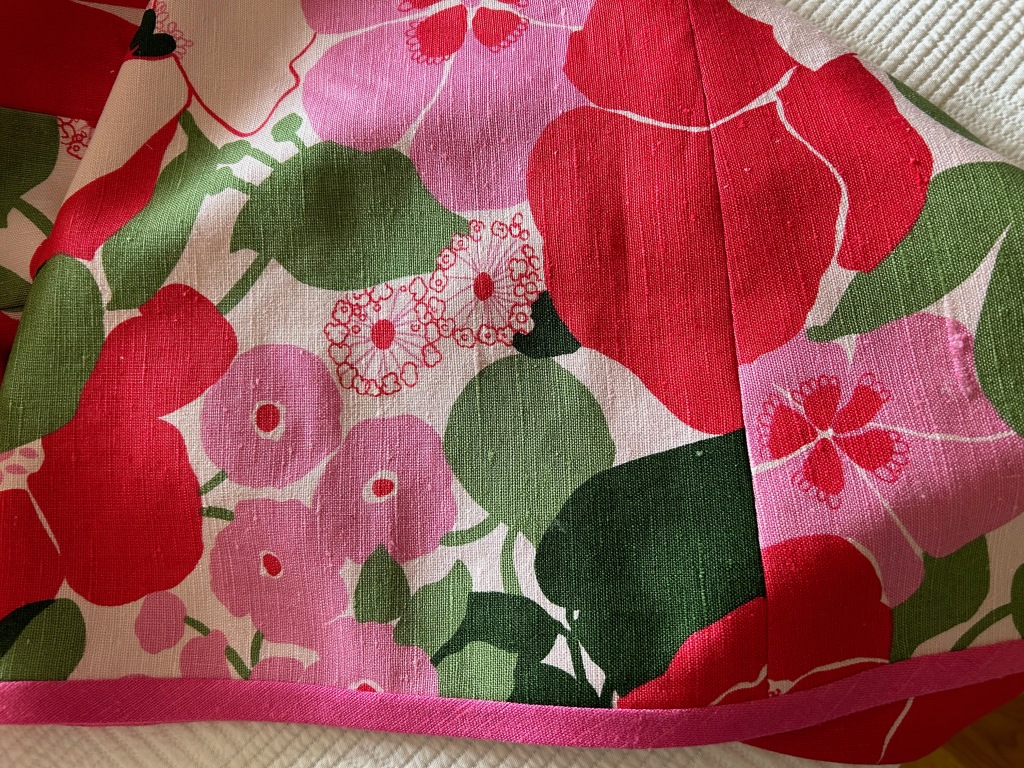


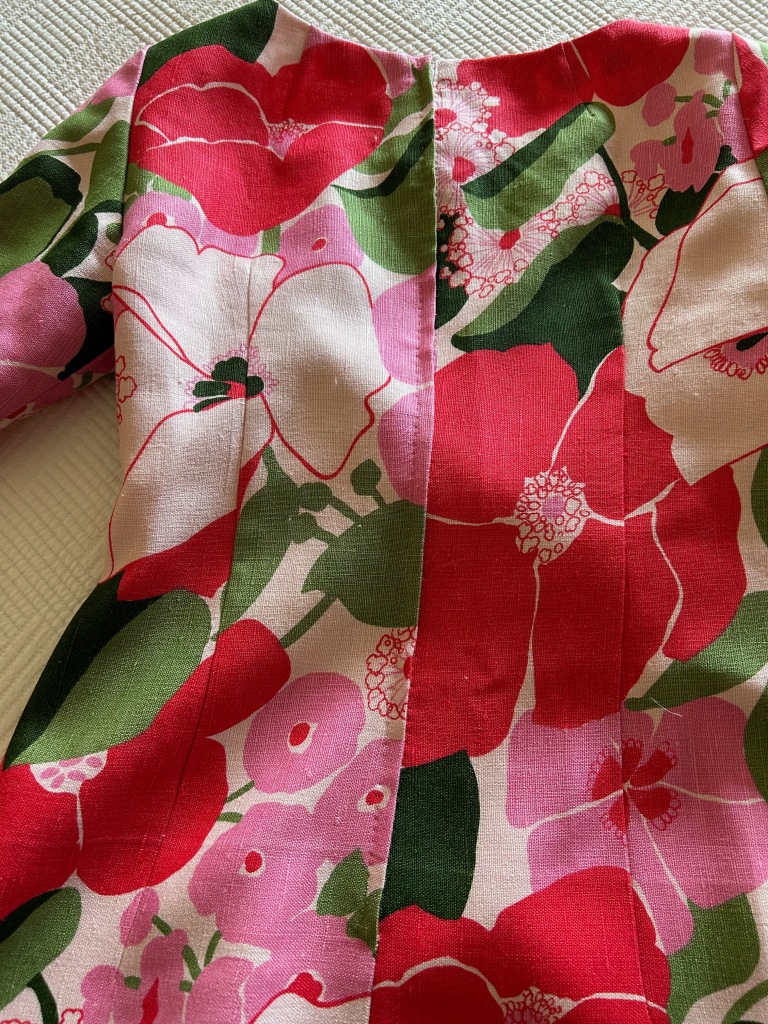

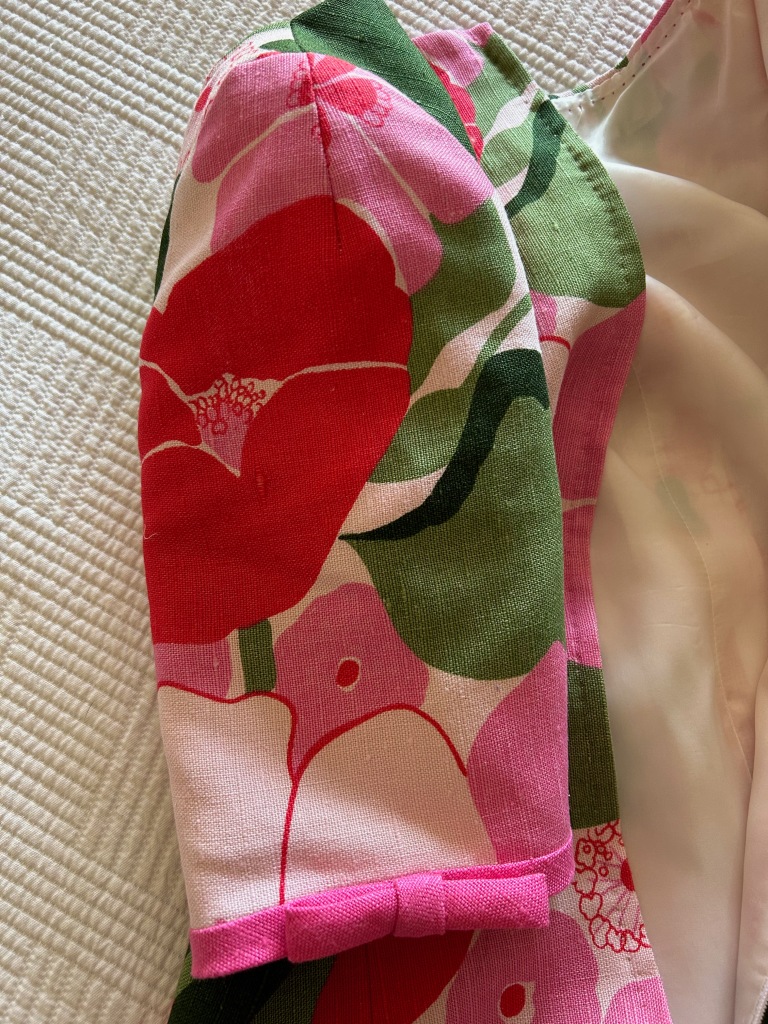






















































































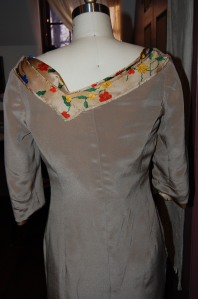




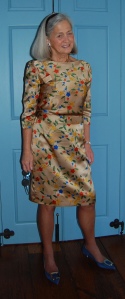
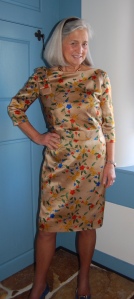

























A Three Piece Outfit for the Holidays, Part 3: The Sash
The sash started it all. After finishing this silk taffeta coat last year, I was left with about 1 and ½ yards of that luscious coral fabric.
I just could not stand the thought of having that yardage sitting in my fabric closet, unused, as I found it so delightful to sew and to wear. That is when I got the idea to combine this fabric with the Guipure lace, also sharing space in that closet of wonders. However, my first thought was to make a blouse from the fabric and also use it as the fashion fabric for a lace skirt, knowing I would need at least one more yard to accomplish this plan. I contacted Britex Fabrics, from whence the fabric came, and to my dismay, they were sold out, with no more available to special order. Undeterred, I then came up with the idea of coordinating fabrics for the blouse and skirt, and using the coral silk to tie it all together. After receiving swatches of several silks from Britex, I settled on the bronzy brown and the apricot colored fabrics for the skirt and blouse, respectively.
A sash should really be straightforward, right? Well, yes; however, I thought it would be good if the sash had a slight curve to it to follow the curvature over the upper hip. That’s when I went to my closet and pulled out a silk sash that I purchased from J. Crew years ago. I had remembered correctly that it had a slight curve to it:
I often think of the tip in the book 101 Things I Learned in Fashion School, page 86: “When in doubt, look in your closet.” Looking at something that is “Ready to Wear” will often help you with construction methods or design ideas.
The J. Crew sash is 72 inches long. A trial tying of the bow proved to me that I needed to add more length to the sash if I wanted to tie a full bow at the waist, which was my intent. I determined that adding 12 inches would do the trick. Then I used that sash as a template to make a pattern, not quite knowing how sewing that long, slow curve was going to work (the sash has one long seam on the concave side of the curve, meaning that some give would need to be worked into that seam.) As it turned out, ironing was the trick to get it to behave correctly, as is so often the case!
84″ proved to be the perfect length to tie a complete bow.
I had to piece the sash in the center back, but I knew that ahead of time and it really does not bother me.
After trying on this completed outfit for the photos, I know that I need to somehow tighten up the interior waist of the skirt (you many recall from my last post, that I added what turned out to be unnecessary width to the circumference of the waist.) My blouse is not going to stay tucked in if I don’t, and the skirt feels like it is drooping on me. I am going to try adding interior waist elastic to straddle the side seams and see if that might do the trick. I am not about to take the skirt apart and remake it! And the sash should help conceal any bobbles in the waistline.
The “concealed zipper.”
It was cold and blustery when I took these photos! I could not wait to get back inside for a cup of hot tea!
Sewing for the holidays is such an anticipatory activity, and one that I love to do. There is already a festive feeling in the air here in late November, and so much more to sew…
28 Comments
Filed under Blouses, Bows as design feature, Fashion commentary, Lace, Silk taffeta, Uncategorized
Tagged as Blouses, Britex Fabrics, fashion sewing, Sashes and bows, silk